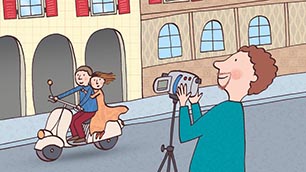I. The Imperfect
The imperfect, or l’imperfetto, is a past tense that is generally used to convey actions that were in progress in the past. It can be thought of in many cases as the descriptive past. The imperfect can have several equivalents in English:| studiavo | --> | I was studying I used to study I studied I did study I would study |
To form the imperfect tense, you add an appropriate ending to the verb stem. In the following table, you can see the conjugations for regular verbs in -are, -ere, and -ire in the imperfect. The endings added to each stem are in bold.





















